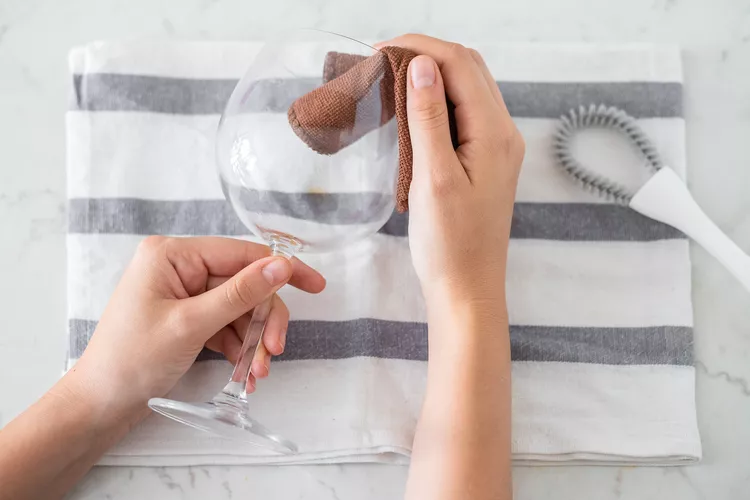
Master sommeliers and wine connoisseurs agree that wine can taste differently depending on the type of wine glass you use.
Whether you are using a stemmed, narrow flute for champagne, a large-bowled stemware for red wine, or one of the modern stemless wine glasses, it should be sparkling clean.
Learn how to clean wine glasses correctly to remove stains and enjoy the wine at its best.
How Often to Clean Wine Glasses
Wine glasses should be washed after every use. Ideally, you would wash the glass or find a fresh one each time you move between wine varieties or vintages.
Glasses should be washed at least yearly, even if they are stored in a closed cabinet, to remove dust and pollution that could cause etching to the glass.
Wine glasses should also be washed after unpacking after a move before placing them in a cabinet or rack.
What You’ll Need
Equipment / Tools
- Large sink or plastic tub
- Rubber sink mat
- Microfiber towels
- Wine glass brush
- Fork or bamboo skewer
- Microfiber dishcloth
- Nylon net dish scrubber
- Microwave or stovetop
- Microwaveable bowl
- Pan
Materials
- Mild dishwashing liquid
- Distilled white vinegar
- Baking soda
Instructions
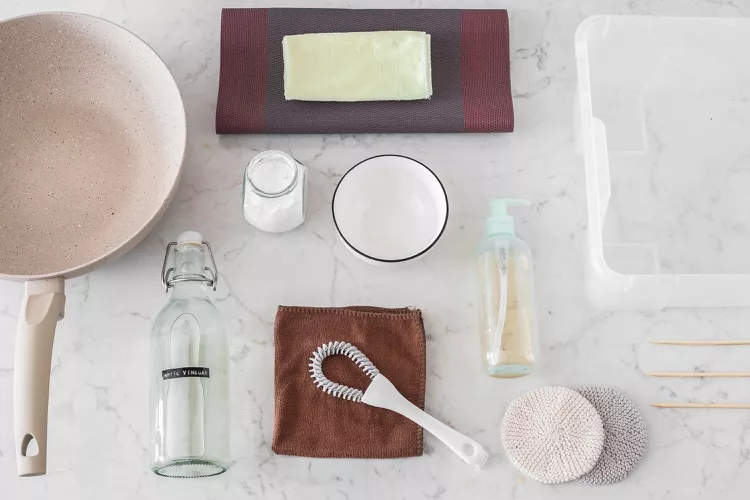
Before You Begin:
To protect your wine glasses from harsh detergents and scratches, hand-washing is recommended. If you choose to use an automatic dishwasher, always load the glasses with plenty of space between them in the upper rack.
They should not touch. If they are too tall for the upper rack, try to adjust it or use the lower rack but do not allow the glasses to touch plates or silverware. Use the gentle, no-heat dry cycle. Remove the glasses while they are still damp and hand-dry each one with a lint-free towel.
Skip the Suds
When washing freshly used wine glasses, fill a sink or plastic tub with warm water and just a drop or two of dishwashing liquid. You do not need much soap to clean the glasses.
Line the bottom of the sink with a rubber mat or dishtowel to help prevent chips or scratches from the sink.
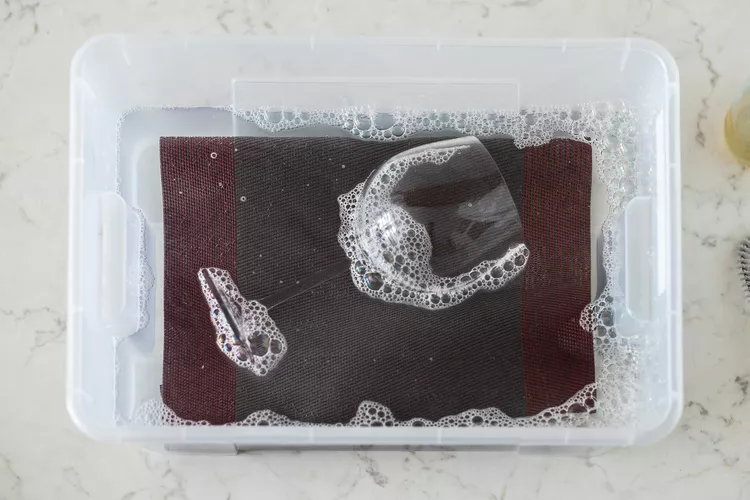
Wash Gently
Use a nylon scrubber or wine glass brush to wash the glass. Focus on the rim and the interior of the bowl.
For a delicate stemmed glass, hold the glass securely by the bowl with one hand and wash it with the other hand.
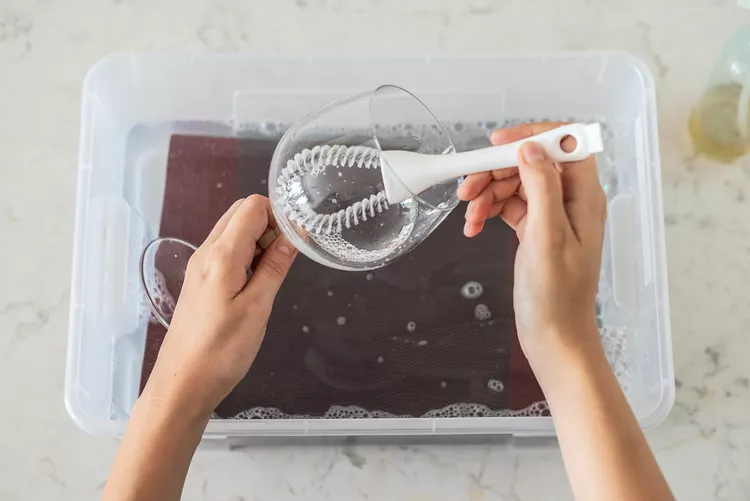
Use the Right Water Temperature for Rinsing
Always use warm water for rinsing—never cold or hot water. The rinse water should be the same temperature as the washing water to prevent cracks in the glass from extreme temperature changes.
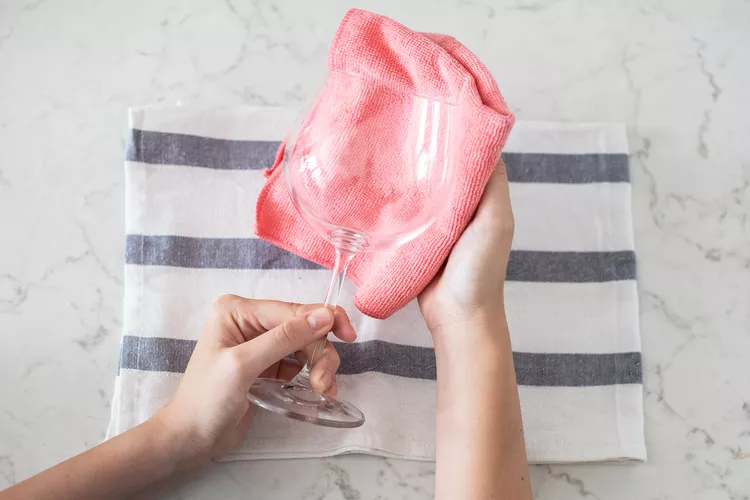
Lint-Free Drying
Use a lint-free cloth, like a microfiber towel to dry the glasses. Again, hold the glass firmly with one hand and use the towel to dry the bowl, stem, and base of the glass.
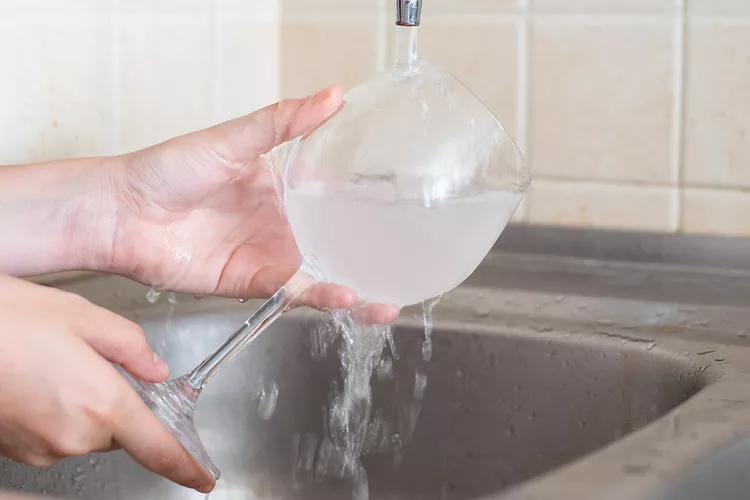
How to Remove Cloudiness and Tough Red Wine Stains
If you left the glasses sitting overnight with a bit of wine still in the glass, you may have tough red wine stains to remove.
Warm Some Distilled White Vinegar
Fill a microwaveable bowl about half full with water and heat in the microwave until it is simmering. Or, heat a pan of water on the stovetop until it is simmering.
Place a bottle of distilled white vinegar in the water and let it sit for about five or 10 minutes to warm.
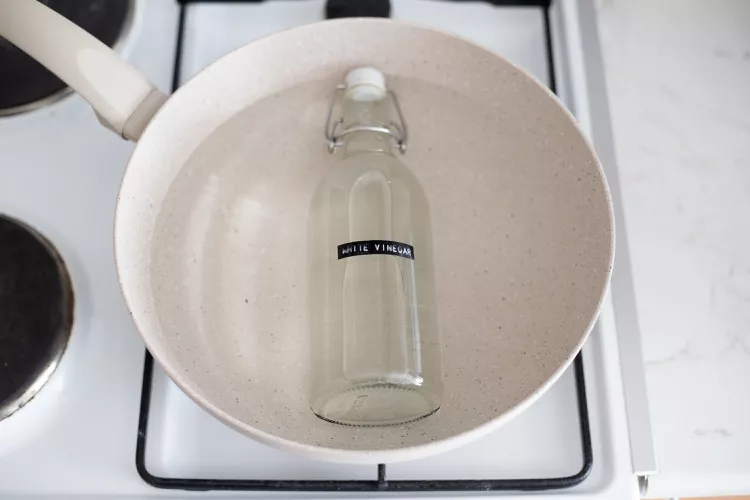
Soak the Wine Glasses in Warm Vinegar
Pour the warm vinegar into the bowls of the glasses or fill a plastic tub with the vinegar and submerge the glasses. Let the glasses soak for an hour.
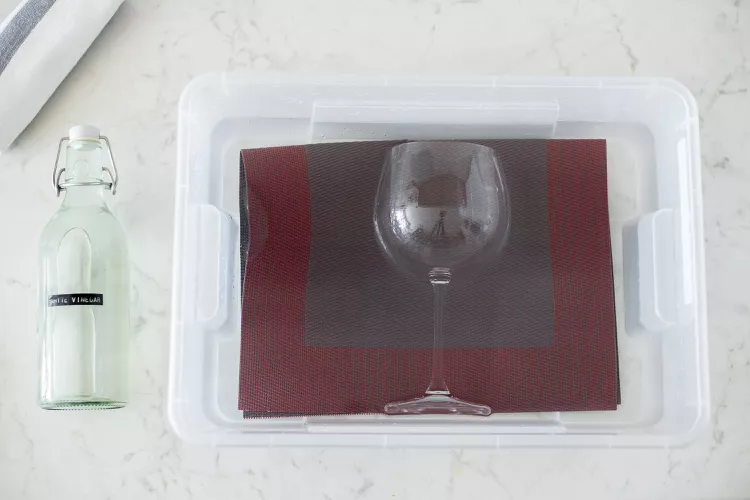
Scrub and Wash the Wine Glasses
After soaking, use a wine glass brush or a fork or bamboo skewer wrapped in a microfiber dishcloth to scrub the bottom of the bowl of the glass. Then wash, rinse, and dry the glasses as usual.
If the stain remains, fill the wine glass half-full of warm vinegar and add one teaspoon of baking soda. There will be fizzing!
The chemical reaction between the vinegar and baking soda will help to loosen the wine stain.
When all of the fizzing stops, scrub the glass gently with the brush and then wash as usual.

Clear Away Cloudy Film
The same warm vinegar soak will cut through any film left on the glasses from residual detergents, fingerprints, or pollution.
It will not remove scratches or etching that have occurred due to washing the glasses repeatedly in hard water.
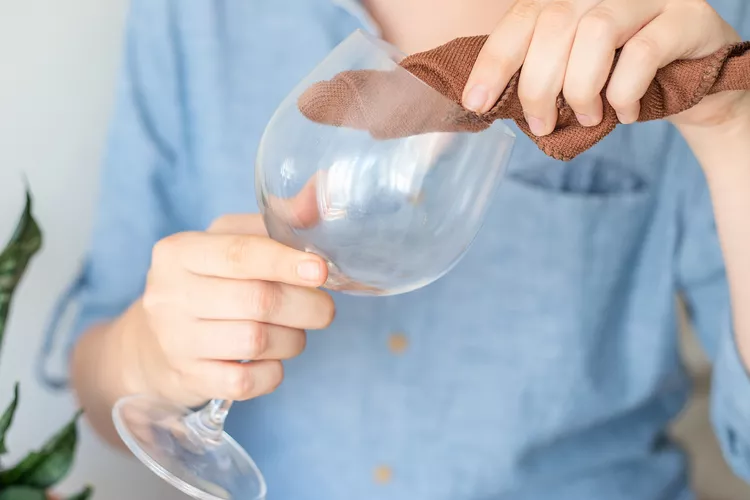
Tips to Keep Wine Glasses Crystal-Clean Longer
- Always hand-wash the glasses as quickly as possible after they are used.
- Use less detergent to reduce cloudiness from sticky residue.
- Always use warm water for washing and rinsing.
- Do a warm distilled white vinegar soak at least yearly.


These tips for cleaning wine glasses properly are excellent! I appreciate the emphasis on gentle handling and avoiding harsh chemicals to preserve the delicate glassware. The step-by-step instructions, from pre-rinsing to air-drying, ensure thorough yet careful cleaning. The suggestion to use a lint-free cloth for polishing adds a professional touch. Can’t wait to put these techniques into practice and enjoy my wine in sparkling clean glasses!
Thank you for sharing these valuable tips on cleaning wine glasses! The advice to hand wash glasses with mild detergent and warm water is reassuring, as it ensures gentle yet effective cleaning without the risk of damage. I also appreciate the reminder to avoid using abrasive sponges or dishwashers, which can scratch or cloud the glass. With these simple yet important guidelines, I feel more confident in maintaining the beauty and clarity of my wine glasses.
Cleaning wine glasses properly is essential for preserving their clarity and ensuring an optimal tasting experience. This article offers practical and effective tips for removing stains and residue, emphasizing the importance of gentle handling and using the right cleaning tools. I appreciate the step-by-step instructions and the emphasis on air-drying to prevent streaks and water spots.
Maintaining the pristine condition of wine glasses is crucial for enjoying wine to its fullest, and this article provides valuable insights into the proper cleaning process. I found the advice on using warm water and mild detergent particularly helpful for removing lipstick marks and fingerprints without leaving any residue behind. The tips for preventing breakage during washing and drying are also worth noting, as they can help extend the lifespan of delicate glassware.
As a wine enthusiast, I’m always looking for ways to keep my wine glasses sparkling clean, and this article offers some excellent advice. I appreciate the emphasis on hand-washing over using the dishwasher, as it allows for greater control and minimizes the risk of damage. The tips for drying wine glasses upside down to prevent water spots are especially useful, as they ensure a flawless finish that enhances the presentation of fine wines.
Properly cleaning wine glasses ensures a pristine drinking experience and preserves their delicate features for future use.